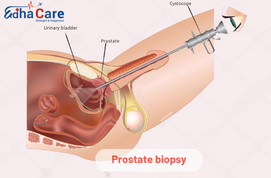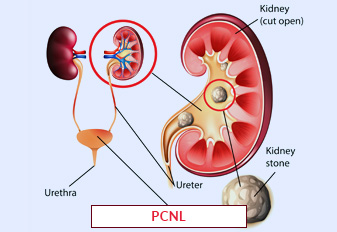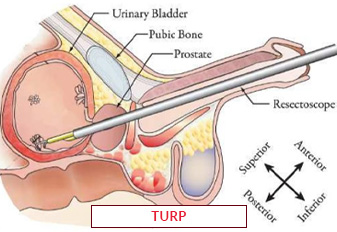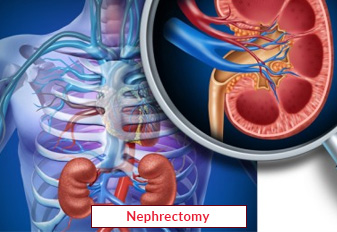Prostate Biopsy

Prostate tissue samples are collected during the prostate biopsy procedure in order to identify or rule out cancer of the prostate. A tiny needle is introduced through the center of the rectum or the perineum to obtain samples, usually under local anesthetic. Although pain is possible, major problems are uncommon. Men may have rectal pain, bleeding in their urine or sperm, and temporary bleeding after the surgery. Choices on treatment with radiation, having surgery, or active surveillance are made according to the results. Before having a biopsy, individuals should carefully weigh the benefits and risks with their healthcare physician.
Book an AppointmentAbout Prostate Biopsy
Prostate Biopsy Symptoms: A biopsy of the prostate is not going to result in symptoms by itself. Prostatic-specific antigen (PSA) blood tests, digital rectal exams (DRE), or imaging procedures like Magnetic resonance imaging (MRI) or ultrasounds typically reveal unexpected results, which may point to the presence of cancer of the prostate or additional disorders. These findings, however, are typically the rationale for a biopsy of the prostate.
Prostate Biopsy Causes: The primary goal of a prostate biopsy is to detect or rule out cancer of the prostate. It is suggested in cases where indications from other tests point to the potential presence of cancer, such as elevated levels of PSA or questionable imaging or physical exam findings. The prostate gland's aberrant cell proliferation is the cause of cancer of the prostate.
Prostate Biopsy Remedies: Prostate tissue samples are collected for laboratory analysis as the main goal of a prostate biopsy. Prostate cancer and other illnesses can be accurately diagnosed with the help of a biopsy, which facilitates the development of the best course of therapy. Depending on a number of variables, including the patient's preferences and the cancer's stage and grade, options for treatment for cancer of the prostate can involve active surveillance, radiation therapy, surgery, hormonal therapy, treatment with chemotherapy, or immunology.
Procedure of Prostate Biopsy
Preparation: The patient undergoes preoperative preparations, which may include discontinuing blood-thinning medications, administering antibiotics to reduce the risk of infection, and providing instructions for bowel preparation, such as enemas or laxatives.
Anesthesia Administration: Local anesthesia is administered to numb the area around the prostate, typically in the form of a local anesthetic injection into the perineum (the area between the scrotum and anus). In some cases, sedation may also be provided to help the patient relax during the procedure.
Positioning: The patient is positioned lying on their side with knees bent or lying face down on a table, allowing optimal access to the rectum for biopsy needle insertion.
Biopsy Needle Insertion: A thin biopsy needle is inserted into the prostate gland through the wall of the rectum (transrectal approach) or through the area between the scrotum and anus (transperineal approach). The needle is guided into specific areas of the prostate gland to obtain tissue samples.
Tissue Sampling: Multiple tissue samples, known as cores, are collected from different areas of the prostate gland using the biopsy needle. Typically, between 10 and 12 cores are obtained to increase the chances of detecting cancerous or abnormal cells.
Post-Biopsy Care: After the biopsy, pressure may be applied to the biopsy site to help minimize bleeding. The patient may be monitored for a short time to ensure stability before being discharged home with instructions for post-biopsy care, including avoiding strenuous activities and monitoring for signs of infection or complications.
Pathology Analysis: The collected tissue samples are sent to a pathology laboratory for analysis under a microscope. The pathologist examines the tissue samples to determine if cancerous or abnormal cells are present and provides a report to the patient's healthcare provider for further management.
Require Assistance?
Get A Quick Callback From Our Healthcare Experts






